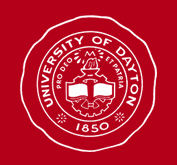Abstract
One of the abundantly fruitful acquisitions of post-conciliar Catholic Christianity is the highly complex and pluralistic articulation of religious possibilities emerging out of a renewed and rigorous study of its heritage. Rather than a lifeless body of propositions, this past is more and more approached and seen to be a rich, living reality in need of critical reapportionment. While this activity is discomforting and disconcerting for some individuals and even vigorously opposed by others, there is little doubt that this mining of the multiplicity of riches will continue.
From a general theological point of view, one area proving to be particularly productive is the on-going dialogue concerning those unique areas of emphasis peculiar to Catholicism. This discussion is reaching such a point that in outlining what he views as Catholicism's "essential traits" the distinguished American Protestant theologian Langdon Gilkey writes: What ... a restructuring of these ... essential traits ... might look like, only a Catholic can or should say. But a sympathetic observer may well state that this is where the hope of a revitalized Christianity probably lies.
What is it that Gilkey sees in Catholicism that leads him to such an assertion? What does he think is the underlying vision that defines the uniqueness of the Catholic religious horizon? And for the purposes of this paper, in what ways does this uniqueness function so as to shape the way Catholicism views society? It is the purpose of this paper to address these issues.
Recommended Citation
Manno, Bruno V.
(1980)
"The Catholic Imagination and Its Relationship to Catholic Social Theory,"
University of Dayton Review: Vol. 14:
No.
3, Article 11.
Available at:
https://ecommons.udayton.edu/udr/vol14/iss3/11


